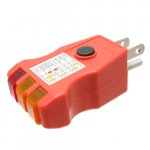I have had the saw for some time but I am a hobbyist so it has only seen reasonable use. The saw gets bogged down and slows down considerably. While cutting 3/4 ply I need to stop at least once stop and then turn the saw back on and let the blade get up to speed to continue the cut. This has also happened with 1/2 sheet goods as well. I am using the stock blade.
Everything else is great with the saw. Even though it bogs down the quality of the cuts are excellent. I cut some 3/4 hard maple over the weekend and I took it real slow and it did great. No burning and the cut was clean. If the maple cuts had been longer I would have had to stop and restart.
Any ideas what this could be? Thanks
Everything else is great with the saw. Even though it bogs down the quality of the cuts are excellent. I cut some 3/4 hard maple over the weekend and I took it real slow and it did great. No burning and the cut was clean. If the maple cuts had been longer I would have had to stop and restart.
Any ideas what this could be? Thanks

